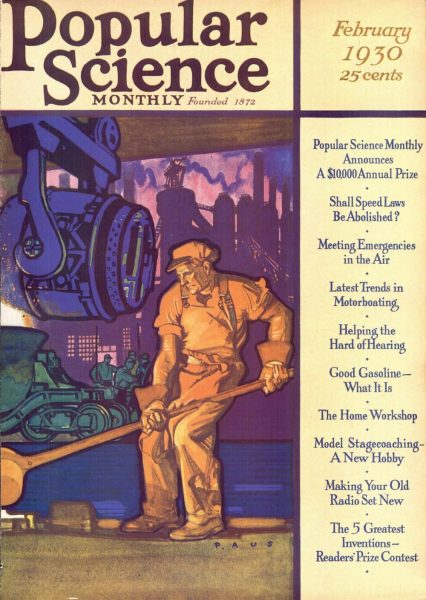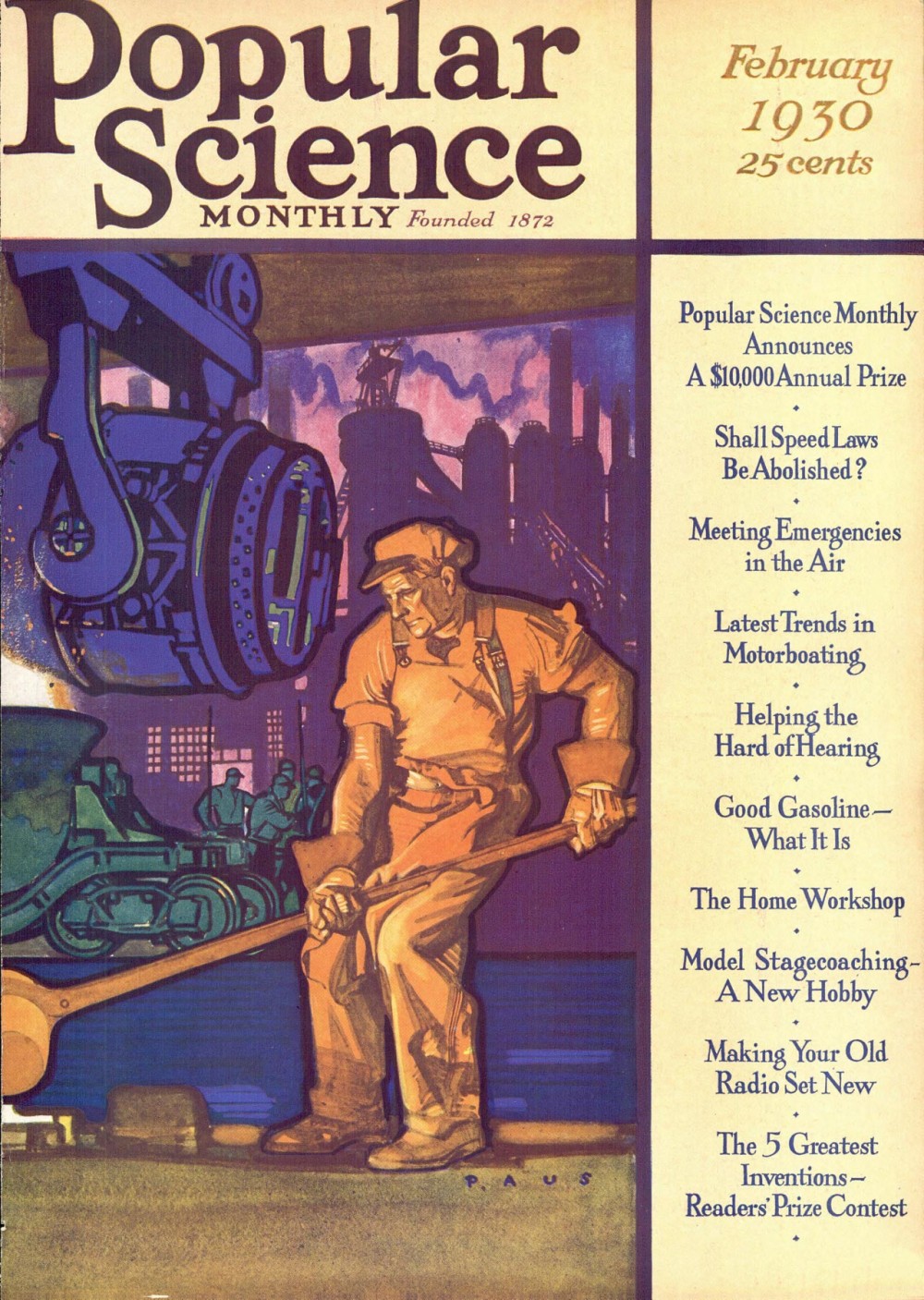This gadget from 1930 let people ‘talk’ to the dead—with a magic trick

MAGIC FIRST TOOK SHAPE from the occult—from unseen forces once more popularly believed to flow from the spirit world to alter the course of mortal events. Throughout history, magicians were seen as aloof figures mysteriously granted secret knowledge to channel numinous power. In some cultures and times, magicians held sway as oracles and shamans; in others, they were shunned as sorcerers and witches—or worse. It wasn’t until the late 19th century that magic made a break from its mostly mystical roots. Interest in magic grew exponentially into the 20th century when it became a popular performing art, sparking decades of fantastic feats of illusion, conjuring, and escapology known as the Golden Age of Magic.
Given magic’s history, it is particularly apt that in 1930, in the midst of magic’s heyday, Popular Science offered readers do-it-yourself instructions for building a “spiritphone”—a gadget capable of making prophecies by dint of its apparent radio connection with “the land of the departed.”
“The spiritphone,” wrote George S. Greene, “is easy to construct and still easier to operate, and is one of the most effective tricks for the amateur magician.” The trick’s premise is to guess the name of a famous person secretly picked by a member of the audience.
Slips of blank paper are handed out, and each audience member jots down the name of a “departed hero or famous [person]” of their own choosing. The folded slips are then collected in a hat. A member of the audience is chosen at random to select a folded slip, without peering at the name. The magician hands that volunteer the spiritphone, but not before barely turning a fake screw at its base, which brings the name of a famous person into view on the spiritphone’s dial. The volunteer is then instructed to ask the spiritphone, via a receiver, what name is on the slip of paper. The spiritphone “responds,” and the volunteer announces to the audience what they “hear”—which really means what they see on the spiritphone’s display. To everyone’s delight, the spiritphone’s answer matches what’s written on the folded slip of paper. That’s because when the slips of paper are collected from the audience, with sleight of hand, the magician tucks them into the hat’s interior sweatband and replaces them with slips that all bear the same name, preselected by the magician. The spiritphone has the same name imprinted on the rotating display in its interior mechanism, which Greene’s instructions explain how to build.

Greene was a longtime Popular Science contributor who covered the magic beat, regularly explaining how tricks worked. One such article, written in January 1929, “Famous Magic Tricks Explained,” garnered protest from readers who didn’t want the magazine to reveal what was behind the curtain and spoil the charm of mainstream magic’s spell.
For instance, Greene explained how escapologists, like the legendary Harry Houdini, could vanish from an enclosed tank filled with water. Such tanks, it turns out, had a concealed trap door connected to a man-sized tube that deposited the performer backstage. “To perform the feat,” Greene explained, “one must, of course, have the ability to stay under water for the minute or two required.” Houdini could definitely hold his breath, but did he possess supernatural abilities? According to Greene, the trick is in the prop. Magicians are “specialists in woodcraft and metalworking, electricity, and psychology, and the ideas worked out are, in many cases, equal in cleverness to the products of our modern inventors.”
In Greene’s time, carnivals were a popular venue for magic, and fortune telling was a cornerstone of traveling performances. Remember the crystal-gazing Omaha magician who becomes the Wizard in L. Frank Baum’s The Wonderful Wizard of Oz (an American classic with magic and illusion at its core)? The rise of television after World War II offered magicians an opportunity to branch out from their vaudeville roots. Today, David Copperfield is perhaps one of the best-known practicing illusionists. The 2013 blockbuster movie Now You See Me took illusion to a whole new level with the assistance of magic consultant (yes, there is such a profession), David Kwong.
Do-it-yourselfers nostalgic for the simple but clever magical props popular nearly a century ago can still follow Greene’s detailed spiritphone instructions. Some woodworking knowledge is a prerequisite, and a few modernizations might make the trick more relatable for a contemporary audience. For instance, a Bluetooth earbud or headset could replace the tethered receiver. An enterprising DIY magician might even connect it to their smartphone so a prerecorded name could be whispered into the assistant’s ear to match the secret name on the spiritphone’s display. Oh, and you’ll want to bring your own hat. It’s not likely that anyone in a 2020s audience will be able to offer a 1920s-style felt hat equipped with a paper-slip-concealing interior sweatband.
Read more PopSci+ stories.










